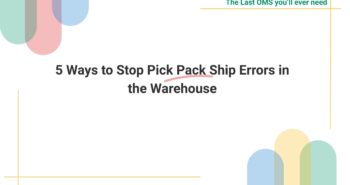Consumers still like fast shipping, but priorities have shifted. In today’s economics and expectations, it’s made clear that delivery accuracy is now more important than speed. Reliable, first-time delivery protects margins, loyalty, and brand trust across DTC, e-commerce, multichannel retail, and wholesale.
Customers now value certainty over pure speed
Recent research shows a marked change in preference. In 2022, speed topped consumer delivery priorities. By 2024, it slipped to fifth, behind reliability, flexibility, tracking, and convenience. That is a fundamental reset for online retail. McKinsey & Company
Shoppers also weigh cost and choice above raw pace. UK surveys find most customers prefer free or fairly priced delivery options, with only a small share prioritising same-day. In practice, shoppers want accurate ETAs and promises met, even if delivery is a day slower. Parcel & Postal Tech Intl
Similarly, delivery quality now centres on the “three Cs” of the post-purchase experience: convenience, communication, and control. Accuracy underpins each dimension, from dependable time windows to proactive updates when exceptions occur. PR Newswire
The invisible cost of getting it wrong
Failed first-time deliveries remain stubbornly high in many markets. Up to 20% of parcels can miss on the first attempt, driving repeat van miles and extra customer contacts. Each failure erodes margin and damages perception. Out-of-home options can help, but accuracy across the chain matters most. Sendcloud
Direct cost per failed drop is not trivial. Industry estimates put a single failed delivery in the £10–£12 range before considering lost goods or refunds. Complex failures can cost far more by the time replacements and service time are counted. Therefore, accuracy outperforms speed on unit economics. Pegasus Couriers
Operationally, poor handoffs and exceptions compound losses. Analysis suggests that inefficient mid- and last-mile interactions can absorb 13–19% of logistics costs. That is waste no retailer wants in a tight market. Accurate promises reduce avoidable handoffs and rework. McKinsey & Company
Accuracy defends loyalty, reviews, and conversion
Customer sentiment is unforgiving when deliveries go wrong. A recent UK report highlights widespread dissatisfaction with late or unreliable deliveries. Negative reviews ripple across product pages and social feeds, suppressing conversion well beyond the immediate order. Why delivery accuracy is now more important than speed becomes obvious when reputation is on the line. OCS Worldwide
Choice also drives conversion. When preferred delivery options are absent, shoppers often abandon baskets. Offering dependable windows, click-and-collect, or local pickup increases confidence. Accuracy in availability and ETA presentation boosts completed checkouts. Enterprise Times
Speed without accuracy creates waste
Chasing ever faster SLAs can backfire. Stock picked for a rushed dispatch may be short, mis-picked, or packed against the wrong promise. Couriers hit tight windows but miss customers at home. Parcels then bounce in the network, burning fuel and patience. Consequently, the last mile becomes expensive and unpredictable. McKinsey & Company
By contrast, accurate dates, addresses, and labels reduce reattempts and WISMO contacts. Clear cut-offs set proper expectations. Transparent tracking reduces anxiety and inbound queries. The result is a calmer operation that still feels fast to customers.
Sustainability and compliance favour accuracy
Retailers face rising scrutiny on emissions, cost to serve, and retailer compliance. Accurate first-time delivery reduces miles and returns, supporting environmental goals. For B2B and wholesale, perfect paperwork and on-time slots prevent chargebacks. Wholesale partners judge suppliers on reliability, not bravado about speed.
Out-of-home delivery also improves first-time success. Customers choose a time-flexible pickup, cutting failed drops and CO₂. Such methods prioritise certainty and often satisfy customers better than paid premium speed. Sendcloud
What “delivery accuracy” really means
Accuracy spans the promise, the process, and the proof:
- Promise: Show realistic ETAs based on stock, cut-offs, and carrier capacity. Avoid over-promising to win the basket.
- Process: Validate addresses, ensure label quality, and assign the right service every time.
- Proof: Provide real-time tracking, proactive exception messages, and delivery evidence for disputes.
When these three align, speed becomes a positive by-product. Customers feel looked after, and finance sees fewer write-offs.
Practical steps for DTC, e-commerce, multichannel retail, and wholesale
1) Set accurate promise dates at the product page
Use real stock, location, and cut-offs. Reflect weekends and regional capacity. Protect the promise over a marginal speed claim.
2) Offer trustworthy delivery choices
Provide standard, next-day, named-day, and out-of-home options. Make the accurate option prominent, not only the fastest. IMRG
3) Validate addresses and prevent failed drops
Run postcode and address checks. Encourage click-and-collect or pickup points when home attendance is unlikely. Sendcloud
4) Orchestrate inventory for first-time success
Ship from the location that meets the promise, not the closest warehouse by default. Consider store fulfilment only when accuracy can be maintained.
5) Strengthen exception management
Alert customers early when delays emerge. Offer quick self-service rebooking or rerouting. Accuracy in communication beats late surprises.
6) Close the loop with clean data
Measure first-attempt success, WISMO contacts, refunds, and delivery-related reviews. Report by carrier, lane, and promise type to improve decisions.
7) Align incentives with carriers
Reward first-time success and safe-delivery evidence. Track compliance to agreed delivery windows and scan events.
8) For wholesale and distribution, nail the paperwork
Accurate ASNs, labels, and time slots prevent chargebacks. Reliability beats shaving hours off lead time when OTIF compliance matters.
The commercial case is compelling
Better accuracy reduces failed deliveries, customer contacts, and returns. Reviews improve, and conversion lifts when delivery choices are trusted. Logistics teams remove waste, while finance sees cleaner reconciliation. In short, why delivery accuracy is now more important than speed comes down to retention and cost to serve. McKinsey & Company+1
Conclusion: accuracy is the new speed
Customers remember promises kept. Teams remember fewer fire-drills. Investors remember protected margins. For DTC brands, e-commerce, multichannel retailers, and wholesalers, delivery accuracy vs speed is no longer up for debate. Build dependable promises, then deliver them, first time.






